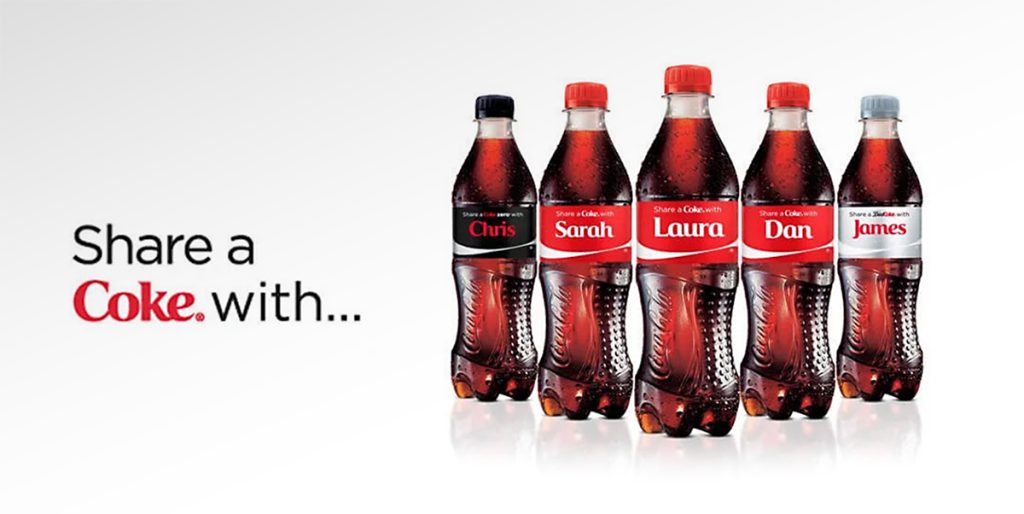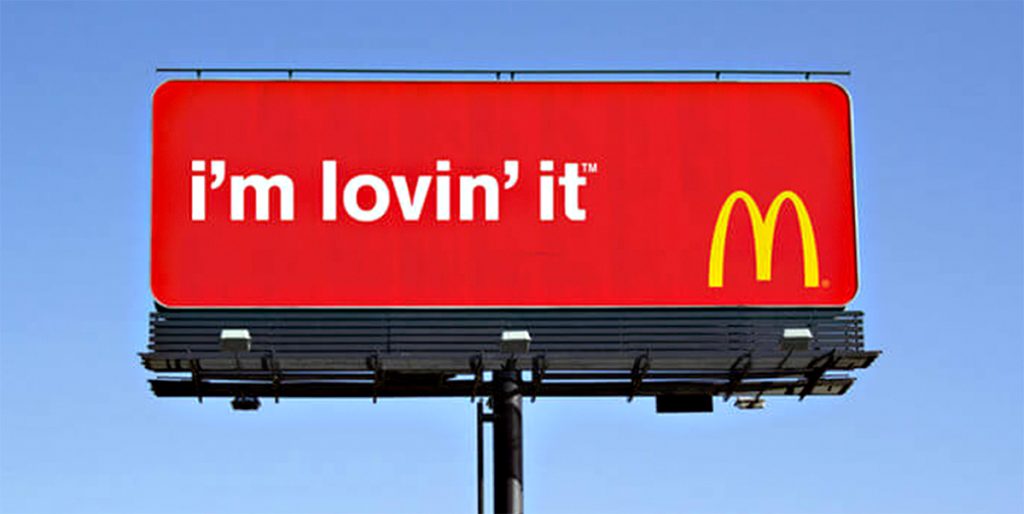Less is more when it comes to debranding — literally.
What appeals to consumers changes with the times and, for companies to be successful, they need to adjust right along with them. Five decades ago, people trusted big corporations and prioritized value. Today, more people are seeking out smaller, independent brands and personal recommendations and are cautious of large companies. Along with big brands and consumer trends, the advertising industry has evolved over the last 50 years and staying on top of the latest marketing research and strategies, like debranding, is how agencies can help their clients succeed in an ever-changing business climate.
Debranding is essentially removing a company’s name from its marketing, relying on symbols and brand recognition to create a more personal connection with consumers. One well-known example was the “Share a Coke” campaign. By replacing the name “Coca-Cola” with Coke on marketing materials and using the names of people and professions on the product, Coca-Cola “de-corporatized” its brand in the eyes of consumers. At Davidson Belluso, our Creative Services Director, Gustavo Estrella, stays up to date on the latest advertising trends and identifies ways they can be effectively applied to achieve our clients’ marketing goals and adapt to current marketing conditions. Debranding is currently one of the fastest-growing trends—a response to the increasingly popular consumer propensity to shop local and support smaller, less corporate brands.

“Debranding boils down to utilizing the bare essentials of creative assets within digital spaces, leveraging the equity a brand has with its consumers,” said Estrella. By simplifying their logos—removing words and minimizing the use of color, dimension, and shading—brands can present a more customer-centric corporate identity. Toyota, Nike, Apple, KIA, Coca-Cola, and Dunkin’ Donuts are familiar brands that have adopted a debranding strategy, but Estrella advises that it’s not an effective approach for every organization. “If a brand hasn’t had enough time to build a lasting relationship in the minds of its target audience, debranding can cause brand confusion,” he said.
In addition to helping companies appear less “corporate,” debranding is also used to project a more modernized image, help companies compete with no-name brands, and improve mobile scalability.
Debranding simplifies design and diversifies usage
From designing digital ads for a small mobile screen to displaying a logo on a t-shirt, a clean and simple logo also works best creatively. As an everyday consumer, you may have already seen some of your favorite brands utilize debranding without fully realizing it. From the Nike swoosh on a hat to Starbucks’ famous siren standing alone on every cup, an identifiable brand can say what it needs to say without actually saying it, leaving opportunity for more customization, flexibility, and personalization.
“When companies choose to go the route of debranding, the focus is put on simplifying the brand’s creative assets just enough to where it’s not losing its identity, but so it’s easily adjustable for future audience perception,” said Estrella. “As an example, some brands may slightly adjust the way their logo’s colors or backgrounds are displayed during a holiday season.”
Multiple versions of debranding have been successfully implemented by some of the biggest and most well-known fast-food, clothing, and technology companies in the world. From creating simplified logo designs and developing custom-centric packaging to building new, smaller brands independent of their giant corporate parent companies, this marketing approach is helping brands convey authenticity and connect with consumers on a more personal level.
Estrella explains that, even in the cases of the larger brands with well-established equity in their names, hours of research, focus groups, and analysis likely went into the finalization of the debrand strategy and execution before making it to market. “Even though we can see the maturity the debranding has given to these logos, the visual integrity and nostalgia is still maintained,” said Estrella. “When making the final decision to debrand you should always ask yourself ‘Does it need it?’ during the redesign process.”
For example, most people would recognize McDonalds’ yellow M and red background without the name in any size or medium, from an Apple Watch or smartphone to a billboard or T-shirt, so a simplified design could be beneficial in delivering quick brand recognition without feeling cluttered. Lesser-known brands, on the other hand, may not be recognizable without the company name. Instead, smaller companies may choose to keep the name visible and simply implement a more minimalist approach in its creative materials as it grows brand awareness.

Turning marketing trends into client success
Our creative team is known for delivering out-of-the-box ideas, exceptional design quality, and creative executions that produce results for our clients. Much of the credit belongs to our clients who value collaboration, innovation, and progress. It’s this trust and partnership that enabled us to execute a debranding strategy for our client Maricopa Association of Governments (MAG).
“While trying to incorporate the look and feel for MAG’s new campaign, our team noted that the logo was busy and had a lot going on for people to digest,” said Estrella. “The original logo had problems with its readability related to impeding colors, and the applicability of the logo was limited in the digital spaces the campaign was set to use.”
The team got together to discuss strategies and solutions and ultimately recommended a debrand strategy to address the fundamental issues with the original logo. The result was a more streamlined logo that was cleaner, more readable, and easily adaptable to a wide variety of applications.

While debranding can be a highly effective marketing strategy, it doesn’t need to be an all or nothing approach. Making small changes can still increase the brand’s authenticity. However, every debranding strategy, big or small, should ensure that the simplification of the brand will deliver the desired results. If you have questions about debranding or other marketing trends, or would like assistance with your marketing efforts, please reach out to us at contact@davidsonbelluso.com.




